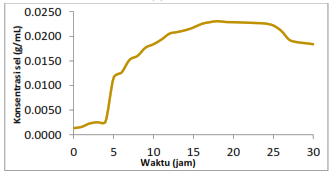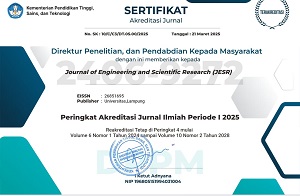Effect of nira (Arenga pinnata Merr) tapping tools on the abudance and identification of microorganisms
DOI:
https://doi.org/10.23960/jesr.v5i2.150 - Abstract View: 307Keywords:
nira, APUS, microbes, observation, identificationAbstract
Arenga trees are known to have economic value, especially its water, called nira. Nira contains sucrose with a neutral pH at the start of tapping, but after 4 hours, the quality of nira will decrease. This is due to the influence of air (aerobic), so that the presence of microbes in nira becomes abundant and causes the fermentation process to take place more quickly. The fermented nira is known as ‘tuak’, the traditional drink of Bataknese people. Batak people believe the benefits of drinking tuak for health. In this study, nira was collected using a simple tapping device (APUS) with the aim of minimizing contact between surrounding air and bunches. APUS was applied to Arenga bunches in Samosir. Nira from tapping with and without APUS will be observed for microbial abundance (its density). Furthermore, the microbes contained in nira will be identified based on their morphological characters (physically). Identification aims to determine the types of microbes that are present from a natural habitat. Next, the microbes are isolated and studied for their shape and properties, before the microbes are utilized further. The results of microscopic observations showed that the nira sample tapped without using APUS (sample A) had a higher and more turbid microbial density and showed non-uniform microbial size (from large to small, like powder), while nira sample tapped with APUS (sample B) showed almost uniform microbial size with cleaner looking spots. Furthermore, the microbes in sample B were isolated on specific media. Acquisition of colonies in the form of acetic acid bacteria (BAA), lactic acid bacteria (BAL), and yeast. BAA isolates showed a group of gram-negative bacteria that could not retain the crystal violet stain when rinsed with alcohol, because the peptidoglycan in gram-negative bacteria was thinner than gram-positive ones, while BAL isolates were the opposite. The measurement of the number of colonies was carried out using the TPC (Total Plate Count) method at 6 dilutions and obtained for BAL and yeast were 147 and 30 colonies respectively.
Downloads







